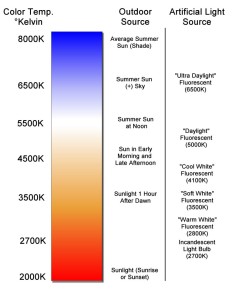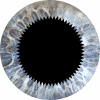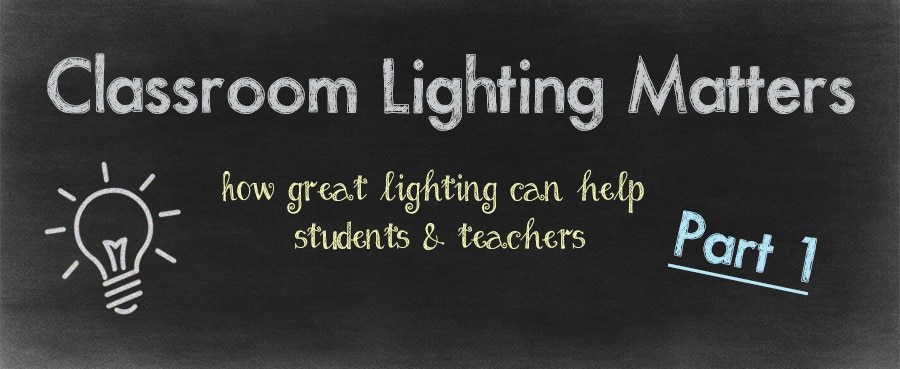Classroom lighting can be an overlooked factor for children’s success in school. However, studies have shown that lighting quality affects students’ abilities to see clearly, concentrate and perform well in the classroom. Since lighting plays a critical role in our everyday lives, it’s worth our while to understand the quality of light that’s shining down on our children.
In the first part of our Classroom Lighting Matters series we’ll explain how replacing traditional classroom lighting with full-spectrum lighting helps students’ performance in the classroom.
Classroom Lighting and Visual Acuity
Could it be possible that different classroom lighting, or the use of fluorescent classroom light filters, could improve children’s abilities to see clearly?
A 2006 study by Berman et al. on lighting and visual acuity suggests this is exactly the case. The study compared the use of standard color temperature fluorescent lighting with the use of high color temperature fluorescent lighting on children’s visual acuity in the classroom.
Let’s quickly define visual acuity: Visual acuity is the clarity or sharpness of vision. The graphic below shows the Snellen chart, a common method for measuring a person’s visual acuity.

Classroom Lighting Study Results
The results from the study were quite enlightening, if you’ll pardon the pun.
The study showed that high color temperature fluorescent lighting helps students see clearer and allows them to read faster. It also reduces the visual fatigue and glare that are typically experienced with standard color temperature fluorescent lighting.
Classroom lighting used in the study included standard 3600K correlated color temperature (CCT) lights and 5500K CCT fluorescent fixtures.
To better explain what this means, we’ve provided a breakdown of correlated color temperatures:
- 2000K CCT is equal to sunlight at sunrise or sunset under clear skies
- 3500K CCT is the equivalent to direct sunlight an hour after sunrise
- 4300K CCT is like morning or afternoon direct sunlight
- 5400K CCT is akin to noon summer sunlight

In short, high-quality classroom lighting improves students’ visual acuity, giving them the sight they need to perform well in school.
Pupil Size Matters

What does a smaller pupil diameter mean? When the pupil is smaller, the depth of the vision field increases and visual acuity improves. This, in turn, results in a reduction in visual fatigue, faster reading times and less visual glare. Essentially, the eye is seeing at its most optimal level.
Whether you are using high color temperature classroom lighting bulbs or classroom light filters to increase the color temperature, you will find your students benefit from improved visual acuity and often perform better in the classroom. By adding more blue/green into the color spectrum, you are essentially creating full spectrum light.
The study also notes a strong correlation between pupil size and reading performance, where light spectrum, not brightness is the driving factor. In a follow-up blog, we will examine exactly how replacing lighting in classrooms with full spectrum lighting has proven to increase reading and math test scores.
NEXT: Can Classroom Lighting Help Keep Students Alert??
Resources
For more information on how fluorescent light filters for classrooms can improve the learning environment, please visit our resource center.
Citations
Berman, Sm, M. Navvab, Mj Martin, J. Sheedy, and W. Tithof. “A “Comparison of Traditional and High Colour Temperature Lighting on the near Acuity of Elementary School Children.” Lighting Research and Technology Light Res Technol 38.1 (2006): 41-52. Web.
Liebel, Brian, Sam Berman, Robert Clear, Rita Lee, and Marc Fountain. “Reading Speed and Accuracy Are Affected by Lighting Level.” Walalight. N.p., 26 Mar. 2014. Web.
